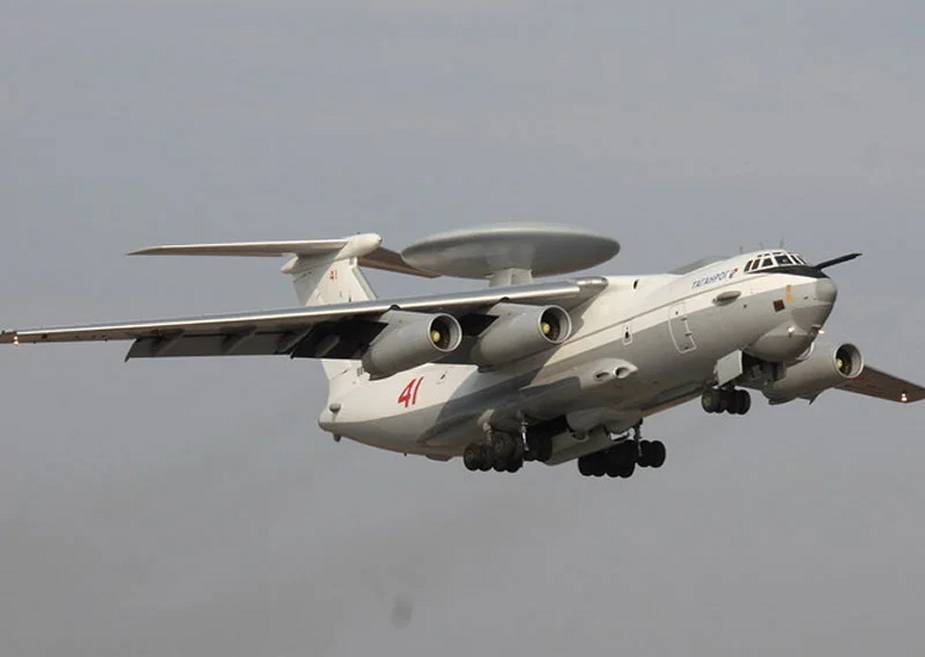Drone attacks carried on by both Ukrainian and Russian forces since the early stage of the war triggered by Russia have already been largely mediatized. Among the recently leaked U.S. confidential military documents, there is one, marked “Top Secret”, that notes two separate attacks carried on with drones allegedly orchestrated by Kyiv that appear to have slightly damaged two Russian targets outside of Ukraine: a Russian Air ForceA-50U AWACS based outside Minsk (Belarus), and a gas compressor station in the Moscow suburbs.
Follow Air Recognition on Google News at this link
 A Beriev A-50U airborne early warning and control (AEW&C) like this illustrated here suffered minor damage from a Ukrainian drone attack on an air base in Belarus (Picture source: Rostec)
A Beriev A-50U airborne early warning and control (AEW&C) like this illustrated here suffered minor damage from a Ukrainian drone attack on an air base in Belarus (Picture source: Rostec)
According to the leaked document, officials of Ukraine’s Security Service, the main intelligence agency, assessed that their agents in Belarus had disobeyed orders by attacking a Russian A-5OU AWACS on a Belarusian airfield on February 26. The document alleges the agents used a quadcopter drone and caused minor damage to the aircraft, which the Russian state-owned weapons developer Rostec calls a flying radar that is capable of operating as a mobile command center.
According to the same document, a similar incident occurred two days later in Russia: Russian officials reported that Ukrainian forces used a drone on February 28 in an attempt “to strike a gas compression station in Moscow’s suburbs”. The result of that attack and the system used to carry it on are unclear.
The A-50U airborne early warning and control (AEW&C) aircraft is an upgraded version of the A-50 AEW&C aircraft. It was developed by PJSC Beriev Aircraft, in collaboration with Vega Radio Engineering Corporation, for the Russian Air Force. It can be deployed in a range of missions, including detection, tracking and identification of friend or foe (IFF) determination of aerial and land-based targets. The A-50U’s radar is capable of detecting new types of aircraft, and can simultaneously track a high number of targets and guided fighters when compared with the earlier upgrade. According to Rostec, A-50U was upgraded under a large-scale program for the renewal of the Airborne Warning And Control System (AWACS) aircraft fleet. Rostec noted that this modernized aircraft is equipped with new electronics for higher performance and speed, and comes with increased functional software capabilities. Furthermore, the upgraded ‘flying radar’ is equipped with a new navigation system.
Late in December 2021, while delivering an A-50U to the Russian Air Force, Vega Concern general director Vyacheslav Mikheev said: “Airborne early warning aircraft are flying radars with the functionality of a command post. We continue to work on the modernization of the military A-50 to the level of the A-50U. This is the seventh such aircraft delivered to the troops. We plan to commission the next board in 2023.”
















